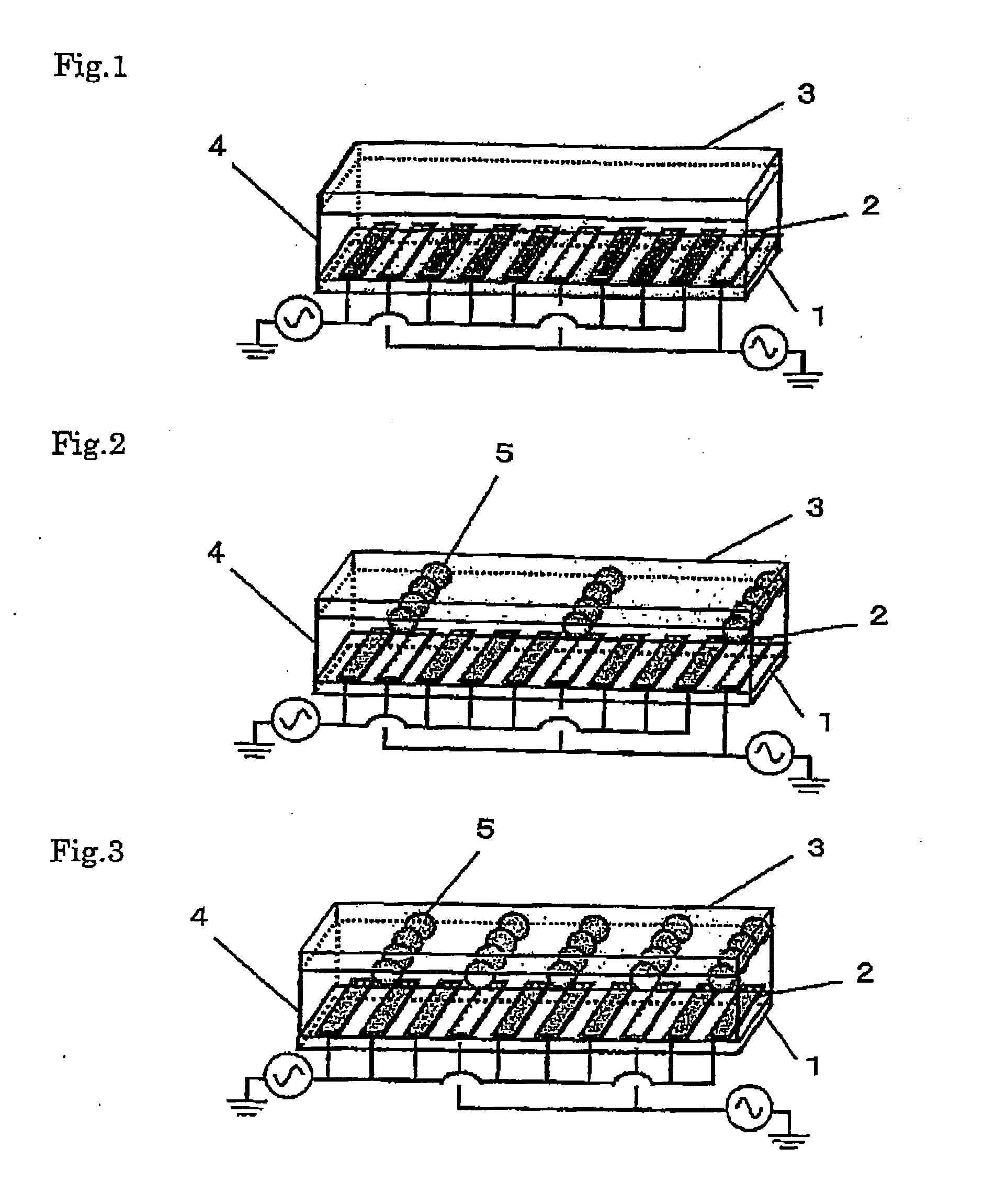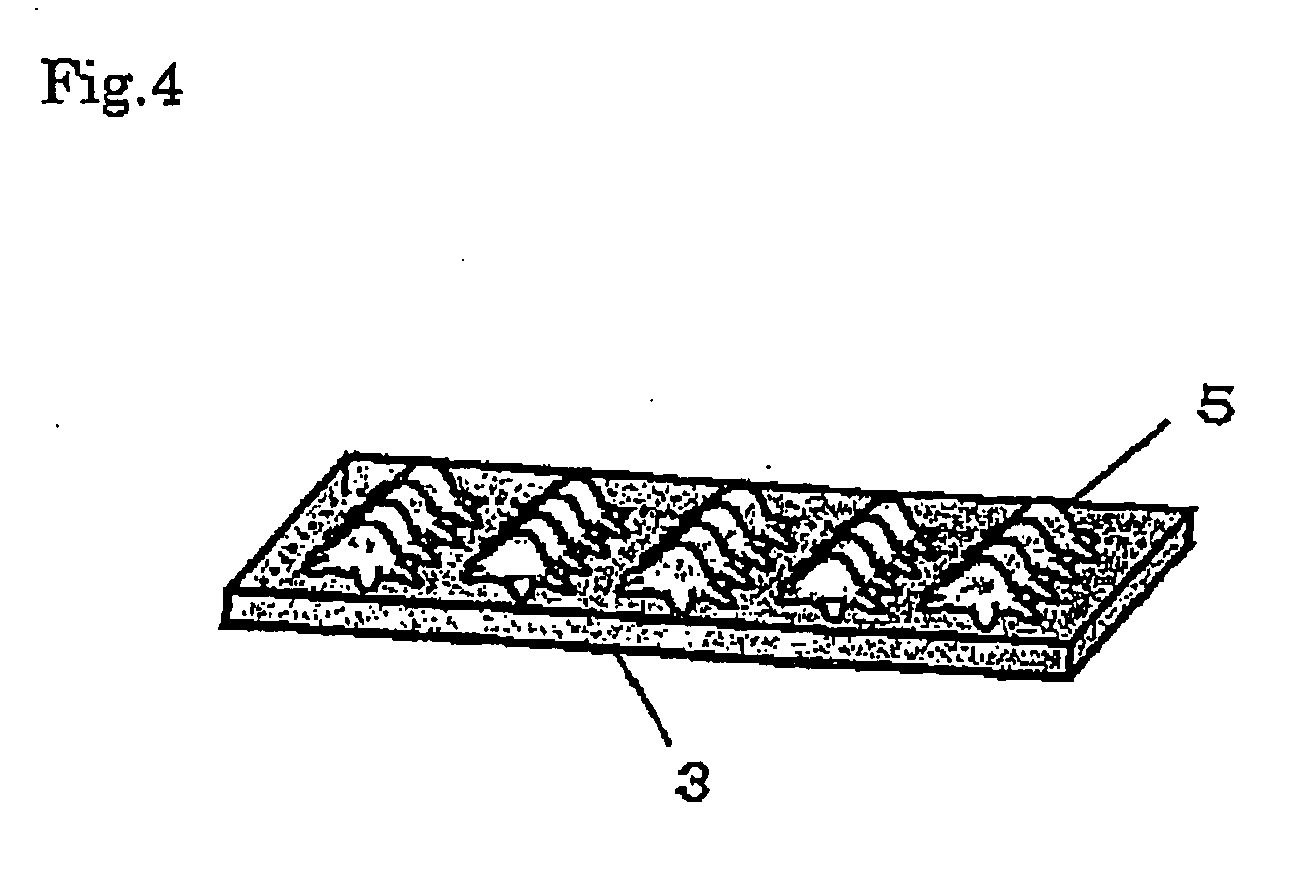Method for cell patterning
a cell patterning and cell technology, applied in the field of cell patterning, can solve the problems of complex process for producing cell culture substrate, difficult to pattern plural kinds of cells onto one substrate, and inefficient cell patterning, etc., to achieve low electric field strength, easy co-culture, and low electric field strength
- Summary
- Abstract
- Description
- Claims
- Application Information
AI Technical Summary
Benefits of technology
Problems solved by technology
Method used
Image
Examples
production example 1
Production of Electrode Substrate
[0050]An electrode substrate was produced in which an IDA electrode with four independently-operating electrodes was formed by photolithography. FIG. 5 shows an outline view of the process of producing such an electrode substrate.
[0051]First, an ITO electrode substrate 10 (manufactured by Sanyo Vacuum Industries Co., Ltd.: 25 mm×35 mm) as shown in FIG. 5(a) was washed. Then the ITO electrode substrate 10 was spin-coated with hexamethyldisilasane, and a positive photoresist (manufactured by Shipley Company L. L. C under the trade name “S-1818”) in this order. Thereafter, the ITO electrode substrate 10 was baked for 3 minutes under a temperature condition of 110° C., subjected to UV irradiation (500 W, 10 seconds) through a photomask having a predetermined IDA electrode pattern. Then, the ITO electrode substrate 10 was immersed into a liquid developer (manufactured by Shipley Company L. L. C under the trade name “MICROPOSIT MF CD-26” to obtain an IDA e...
production example 2
Production of Cell Patterning Apparatus
[0061]An apparatus with a structure shown in FIG. 1 was produced. In such an apparatus, the electrode substrate (the IDA electrode with four independently-operating electrodes) produced in Production Example 1 was used as an electrode substrate 1. “TL-41MS-06K” manufactured by Lintec Corporation was used as a spacer 4. A culture slide (a polystyrene cell culture slide: 25×25 mm manufactured by Nalge Nunc International K.K.) was used as a cell culture substrate 3. The space between the electrode substrate 1 and the cell culture substrate 3 was set to 30 μm.
[0062]The electric field strength in such a cell patterning apparatus was calculated by use of finite element analysis software “COMSOL Multiphysics 3.1a (manufactured by Comsol, Inc. in Sweden). The calculation was conducted in a three dimensional model. The dimensions of the model was set to length (x axis) 900 μm×width (y axis) 10 μm×height (z axis) 30 μm. The electrode substrate was taken ...
production example 3
Culture of Cells (C2C12))
[0067]A mouse myoblast cell line (C2C12) was cultured. Specifically, the undifferentiated mouse myoblast cell line (C2C12) was cultured under conditions of 37° C., 5% by volume of CO2, and water vapor saturation in a Dulbecco's modified Eagle's minimal essential medium (DMEM: manufactured by Gibco) added with lot by volume of immobilized FBS (manufactured by Gibco), 25 U / mL of penicillin, and 25 μg / mL of streptomycin (manufactured by Gibco).
PUM
 Login to View More
Login to View More Abstract
Description
Claims
Application Information
 Login to View More
Login to View More - R&D
- Intellectual Property
- Life Sciences
- Materials
- Tech Scout
- Unparalleled Data Quality
- Higher Quality Content
- 60% Fewer Hallucinations
Browse by: Latest US Patents, China's latest patents, Technical Efficacy Thesaurus, Application Domain, Technology Topic, Popular Technical Reports.
© 2025 PatSnap. All rights reserved.Legal|Privacy policy|Modern Slavery Act Transparency Statement|Sitemap|About US| Contact US: help@patsnap.com



